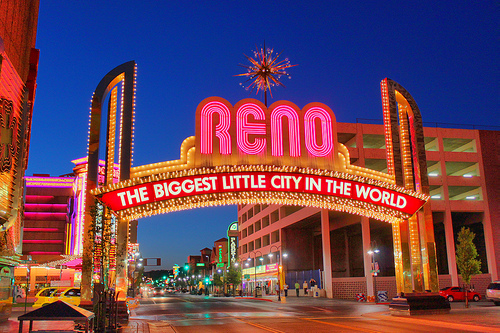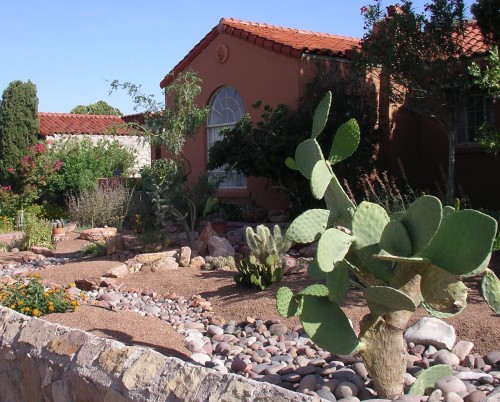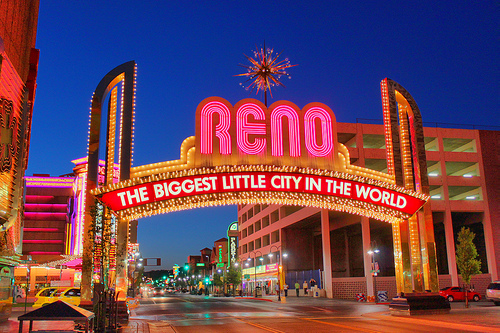 Reno replaced the lightbulbs in its famed Reno Arch with LED lights to conserve energy.Photo courtesy of davegriffiths via FlickrWhen cities are struggling to keep cops on the street and teachers in the classroom, giant solar arrays or towering wind turbines might not be the most attractive line items in the budget. But several cities around the country are finding ways to get smart about energy, and at the same time saving money and pumping up their eco cred.
Reno replaced the lightbulbs in its famed Reno Arch with LED lights to conserve energy.Photo courtesy of davegriffiths via FlickrWhen cities are struggling to keep cops on the street and teachers in the classroom, giant solar arrays or towering wind turbines might not be the most attractive line items in the budget. But several cities around the country are finding ways to get smart about energy, and at the same time saving money and pumping up their eco cred.
The Natural Resources Defense Council, as part of its ongoing Smarter Cities initiative, recently identified 22 U.S. cities as the cream of the crop for their investments in renewable energy, promotion of energy efficiency, or conservation of energy.
The NRDC will select other cities according to 11 additional sustainability factors — including transportation, water, and urban planning — in future reports. (Also read about the cities Grist views as sustainability stars in our Cities of the Future series.)
“We wanted to start with energy, given the links between our energy production and consumption patterns and harm to health and the environment,” says Paul McRandle, research project director. According to the NRDC:
Half of all the electricity produced in the U.S. is derived from coal, the burning of which releases heat-trapping pollutants, mercury, sulfur dioxide, particulates and other health-threatening smog pollutants. While climate change is a worldwide issue, 75 percent of all heat-trapping emissions are generated in the world’s urban areas. Reducing energy use and emissions in cities is therefore fundamental to any effort to reverse the trajectory of global warming.
A few happy stories from the new report:
- Reno, Nev., replaced 2,076 light bulbs on its famous Reno Arch with LED bulbs. Reno also installed wind turbines on the roof of its City Hall.
- Long Beach, Calif., has solar-powered pay stations at three downtown parking lots, and its city trash cans come with solar-powered trash compacters and recycling bins.
- Springfield, Ill., is testing the power of peer pressure by sending residents power bills that compare their household energy usage either to their neighbors or to the city average. Lower energy users get smiley faces; higher-than-average users get a frowny face.
- In Boston, the Massachusetts Port Authority put 20 small-scale wind turbines at Logan Airport.
- Dallas, Texas, purchases a whopping 40 percent of its power from renewable sources, mostly wind.
The NRDC selected its 22 cities based on responses to the survey it sent to 655 U.S. cities with populations higher than 50,000. The Smarter Cities team also identified high-performing cities by crunching numbers previously collected by federal agencies and private institutes.
Just as Portland, Ore., became a smart city role model in 1993 when it became the first to adopt its own climate action plan, these 22 cities may put a little friendly peer pressure on others. Because nobody wants to get a frowny face on their report card.




